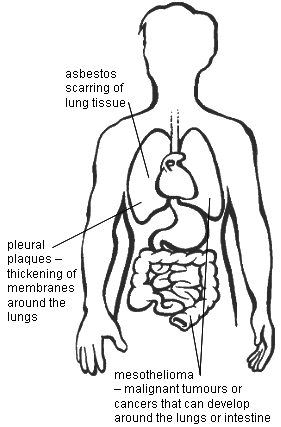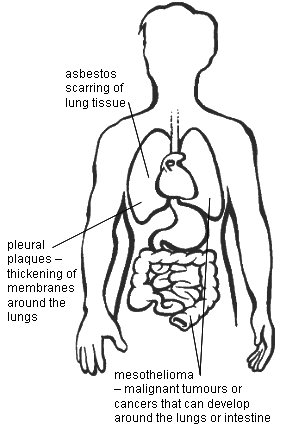Asbestos is a risk to health only when it is inhaled (breathed in) as fine dust. The risk to health increases with the number of fibres inhaled and with frequency of exposure.

When asbestos dust is inhaled, larger fibres tend to be cleared by protective mechanisms in the lungs and upper respiratory tract. The finer fibres are more difficult to remove, and may become deposited in the lungs, or penetrate further into the body.
Diseases related to asbestos
There are a number of diseases that can be related to the deposit and penetration of asbestos fibres:
- asbestosis (scarring of lung tissue)
- mesothelioma (malignant tumours, cancers which develop around the lungs or intestine)
- pleural plaques (thickening of membranes around the lungs)
- lung cancer.
Smoking can increase the risk of developing lung cancer following exposure to asbestos.
Symptoms of asbestos-related diseases include breathing difficulties and ‘scarring’ of the lung that can be detected by X-ray.
The harmful effects following ingestion of asbestos have not been clearly documented. However, there is some evidence that acute oral exposure may induce precursor lesions of colon cancer, and that chronic oral exposure may lead to an increased risk of gastrointestinal tumours.
More information
- Asbestos Exposure in New Zealand: Review of the Scientific Evidence of Non-occupational Risks – a 2015 report from the Royal Society of New Zealand and Sir Peter Gluckman
Based on the HealthEd resource All About Asbestos, which can be downloaded and ordered from the HealthEd website.

